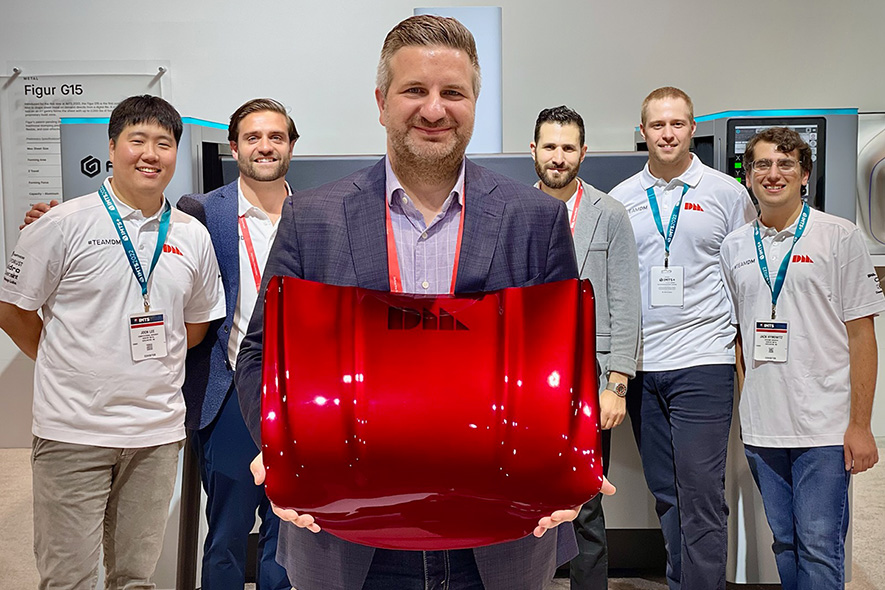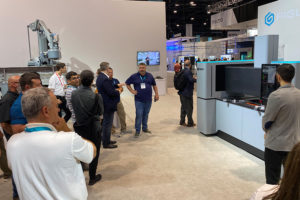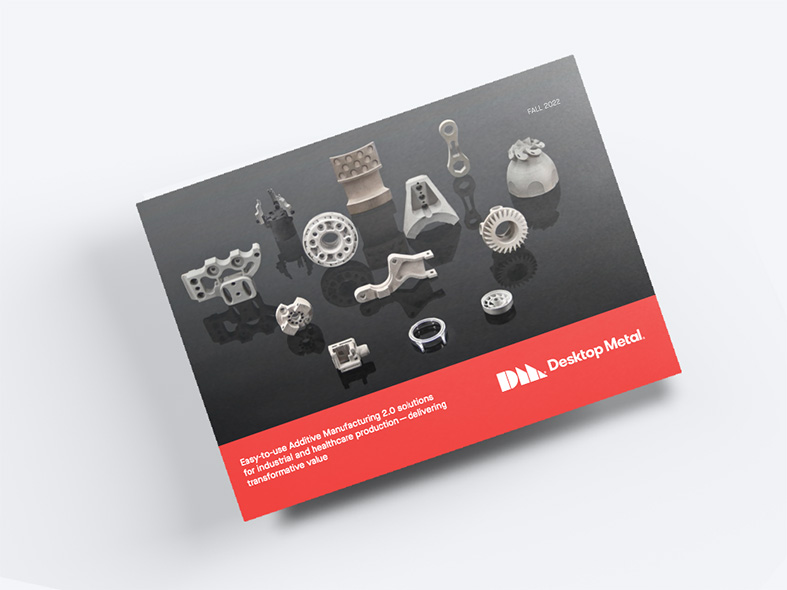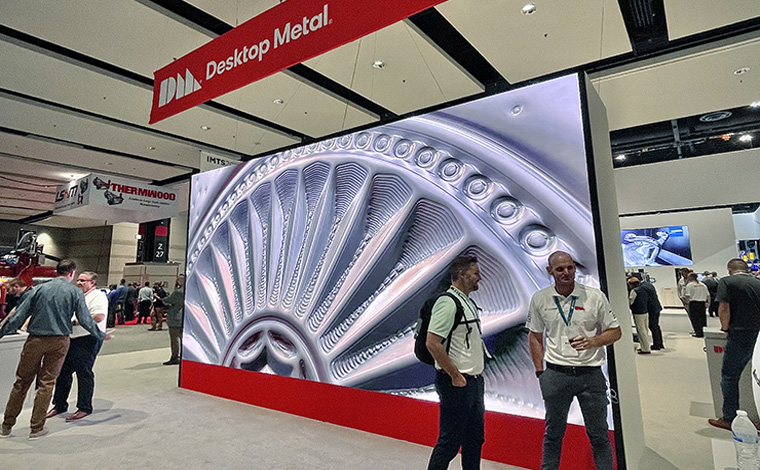Additive Manufacturing 2.0 makes a splash at IMTS in Chicago – 3DPrint.com
The International Manufacturing Technology Show (IMTS), the largest and longest running industry trade show in the Western Hemisphere, returned to Chicago in September. And as pandemic-related supply chain issues remain prevalent, manufacturers gathered in the halls of McCormick Place for the first time in four years in search of agile manufacturing solutions to help their businesses survive and grow. thrive in harsh production environments – and digital technologies have taken center stage. .
Additive manufacturing 2.0 solutions for metal, polymer, sand, wood, etc. were on display, with over 350 3D printed parts showcased by Desktop Metal spread across two booths. More than 85,000 attendees visited IMTS and were greeted by experts ready to discuss solutions with add-on novices looking for easily integrated systems, as well as expert users discussing upgrade operations. scale and the latest innovations in advanced production.
Interest in metal 3D printing continued to drive traffic throughout the week, and Desktop Metal, with the most experienced team of metal binder jetting and sintering experts in the world, presented the wider range of scalable printing systems and hardware capabilities.

One of the highlights of many discussions was the Shop System, the plug-and-play binder jetting system designed to facilitate the adoption of metal 3D printing. The Shop System is an ideal solution for anyone who wants to quickly produce metal products with exceptional surface finish and resolution on a large scale, such as MIM houses and service offices. With production rates of up to hundreds of green parts per day, the Shop System produces parts up to 10 times faster than laser powder bed fusion and many visitors have referred to the investment as a doorway. gateway to the future of metal production. Revealed just before the opening of the exhibition, the Shop System’s expanded offerings to include reduced prices on powder and binders for production-level users or expanded access to print and sinter settings for Advanced metallurgical users to process third party or proprietary powders meant the Shop System was a viable solution for users with varied binder jetting experience and requirements. More so, at the Desktop Metal show, Nickel Alloy Inconel 625 has now been qualified on all of its metal 3D printing offerings, including the Shop System.
 For the production of castings with faster turnaround times, improved quality and less labor, Desktop Metal Company ExOne introduced the S-Max Flex, an all-new robotic 3D printing system to sand. The printhead end effector attached to an industrial robot creates molds and sand casting cores without traditional tooling, saving costs and months of lead time. The easy-to-use system aims to provide easy and affordable integration into digital casting with faster return on investment for foundries of all sizes and has caught the attention of many attendees who had never considered digitizing casting operations. casting.
For the production of castings with faster turnaround times, improved quality and less labor, Desktop Metal Company ExOne introduced the S-Max Flex, an all-new robotic 3D printing system to sand. The printhead end effector attached to an industrial robot creates molds and sand casting cores without traditional tooling, saving costs and months of lead time. The easy-to-use system aims to provide easy and affordable integration into digital casting with faster return on investment for foundries of all sizes and has caught the attention of many attendees who had never considered digitizing casting operations. casting.
 For visitors to the polymer parts production market, the Xtreme 8K was a must-have at the show. As the world’s largest production-grade digital light processing (DLP) system, the Xtreme 8K featured process and material advancements from the Desktop Metal ETEC and Adaptive3D brands. The Xtreme 8K’s unique dual-projector top-down design provides an extremely large build area and improved material properties without sacrificing surface quality and part accuracy. With the ability to 3D print a range of industrial photopolymers from widely recognized brands, such as Loctite, Adaptive3D’s revolutionary proprietary DuraChain™ resins stole the show. The newest category of tough, durable photopolymers includes Elastic ToughRubber™ and FreeFoam™, and the 3D-printed then expanded foam car seat on display has been the subject of discussion all week.
For visitors to the polymer parts production market, the Xtreme 8K was a must-have at the show. As the world’s largest production-grade digital light processing (DLP) system, the Xtreme 8K featured process and material advancements from the Desktop Metal ETEC and Adaptive3D brands. The Xtreme 8K’s unique dual-projector top-down design provides an extremely large build area and improved material properties without sacrificing surface quality and part accuracy. With the ability to 3D print a range of industrial photopolymers from widely recognized brands, such as Loctite, Adaptive3D’s revolutionary proprietary DuraChain™ resins stole the show. The newest category of tough, durable photopolymers includes Elastic ToughRubber™ and FreeFoam™, and the 3D-printed then expanded foam car seat on display has been the subject of discussion all week.

And in line with the company’s mission to provide production solutions across a range of digital technologies, but not additive manufacturing, Desktop Metal has introduced the first commercial platform to shape sheet metal on demand directly from a digital file. The Figur G15 uses patent-pending Digital Sheet Forming (DSF) technology in which a software-driven ceramic tool head on a gantry forms standard sheet metal into pieces with up to 2,000 lbs. of force.  This unique solution eliminates the high start-up costs and long lead times associated with custom tools, molds and dies to unlock the benefits of digitization for sheet metal fabricators, improve their business agility and make sheet metal forming accessible to new applications on a range of volumes. Live demonstrations were performed on the stand twice a day, attracting a crowd eager to learn more about the Figur G15, which began accepting reservations during the show.
This unique solution eliminates the high start-up costs and long lead times associated with custom tools, molds and dies to unlock the benefits of digitization for sheet metal fabricators, improve their business agility and make sheet metal forming accessible to new applications on a range of volumes. Live demonstrations were performed on the stand twice a day, attracting a crowd eager to learn more about the Figur G15, which began accepting reservations during the show.
The theme throughout the week in Chicago was finding production-capable technologies to provide the combination of speed, tolerance, surface finish and material properties for high-volume production that rivals manufacturing methods conventional. The toolless solutions featured in the Desktop Metal portfolio during IMTS seek to provide on-demand parts to help manufacturers of all sizes move into the next era of digital production.

Download more information about the full Desktop Metal range in this brochure.
Subscribe to our newsletter
Stay up to date on all the latest 3D printing industry news and receive information and offers from third-party vendors.


Comments are closed.